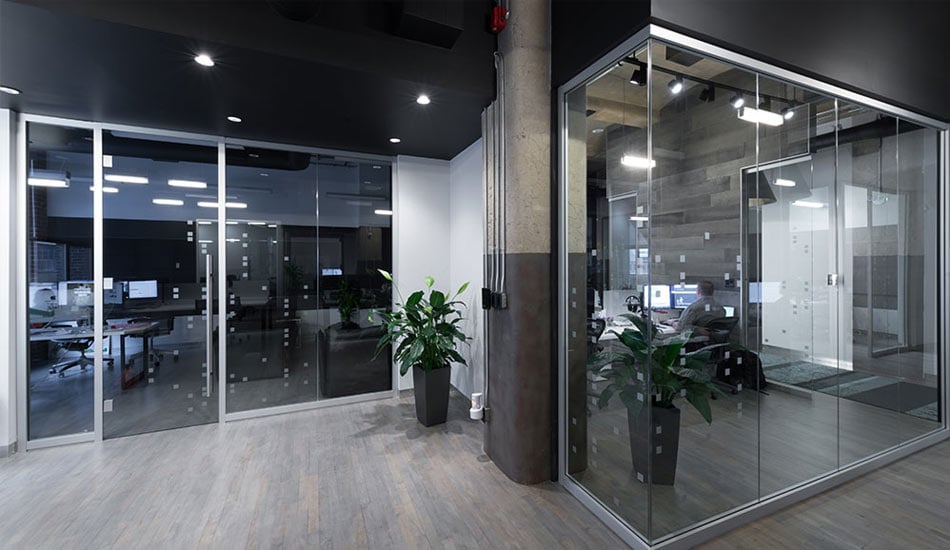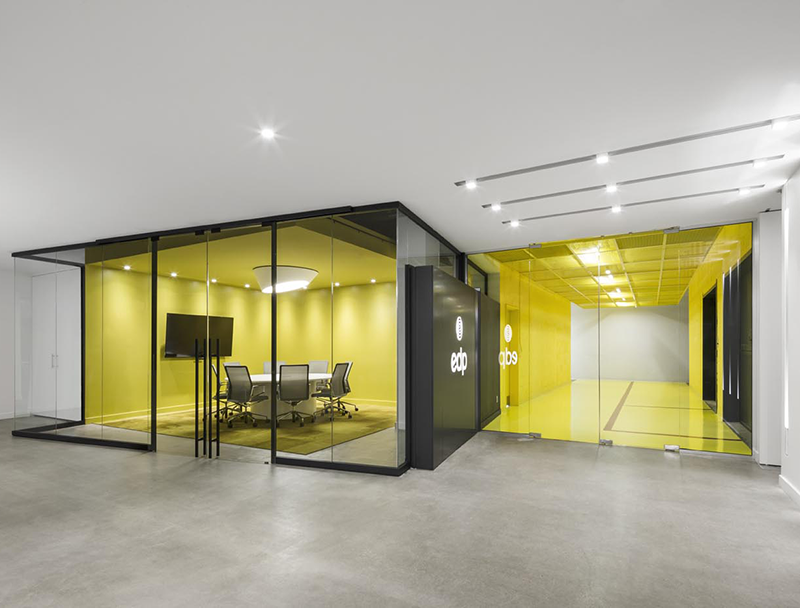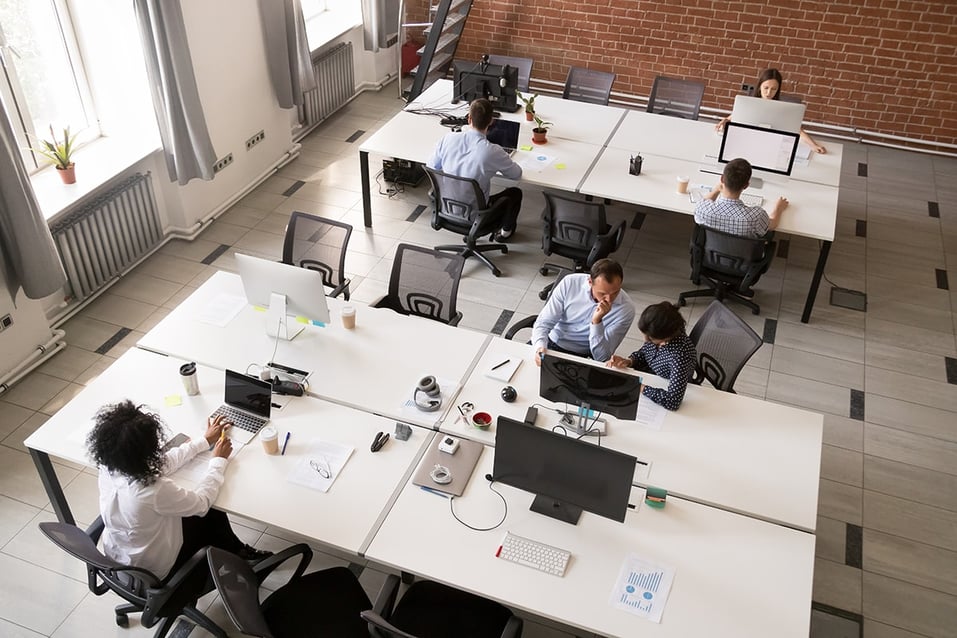The Essential Changes Your Office Design Needs in 2020
Karl Elhen
Aug 12, 2020 1:01:53 PM
Despite many organizations moving to remote operations in the long term, 2020 does not mean the death of the office. For you, it’s a new era, offering an opportunity to reimagine the capabilities of your spaces and to be a leader in both safety and innovation.
When planning to redesign any office space in 2020 and beyond, you need to carefully consider the mental well-being and physical health and safety of your employees. That can be a tough balancing act when you also have to plan for enhanced productivity and sustainability.
Here are some practical ways your office can succeed at all of the above.
Partition systems for health, safety & privacy
Office partitions have long been a solution for privacy and cost-savings. Glass office partitions, for example, can increase the amount of natural light in workspaces for a livelier and more spacious atmosphere.

Now, partitions are playing an essential role in offices.
How will you incorporate this new normal in your workspaces? Think about how partitions will separate your various spaces. Will they separate every workstation or only certain rooms? Will you opt for glass walls wherever possible? These choices will depend on your organization’s needs, of course, but it helps to know your options.
Architecture & design that promote mental well-being

Gimmicks like ball pits and kombucha on tap are simply not working anymore. These are flashy and idealistic but don’t address the long-term mental health needs of employees.
Still, environment is critical to employee well-being. Lighting, colour, and the availability and quality of social spaces can all contribute to your office’s atmosphere, whether positively or negatively.
Consider the ways you can enhance collaborative spaces and even the most basic rooms, like boardrooms and lunchrooms, to foster positive experiences throughout all parts of the workday.
Rethink open office systems
Open offices aren’t working as well as people planned. The aim behind this office trend was to promote collaboration by taking down the walls that divide colleagues—but business leaders have been seeing adverse effects.
 Why? Face-to-face interactions are dying out with the normalization of chats and video calls, even between colleagues in the same room. This might increase the frequency and ease of communication (versus walking to several office doors to reach colleagues), but meaningful and productive communication seems to suffer when it happens predominantly online.
Why? Face-to-face interactions are dying out with the normalization of chats and video calls, even between colleagues in the same room. This might increase the frequency and ease of communication (versus walking to several office doors to reach colleagues), but meaningful and productive communication seems to suffer when it happens predominantly online.
Activity-based working (ABW) spaces are one proven answer to the open office conundrum. ABW spaces contain open office workspaces, but include private, task-oriented spaces for activities like phone calls, device-free work, and brainstorming sessions.
By allowing each space to serve a unique function, this design approach can address industry-specific needs and the diversity of workplace personalities and preferences in every organization.

Start leading by example with your office designs
Consider the problems you’re trying to solve and how modern designs can transform what isn’t working in your specific office environment. Start by testing, experimenting, and seeing what works. These can be small tweaks, from splitting boardrooms into two tables to adding a whiteboard to one workspace and seeing how collaboration changes.
Most importantly, think about how your office can better reflect your culture and people. How do you want your core values, like transparency, collaboration, or sustainability, to be reflected in your organization’s space?
Demountable office walls for the future
For more inspiration, explore the moodwall ecosystem—from glass walls and partitions to doors and acoustic panels—here in the moodwall Architectural Walls Brochure.
